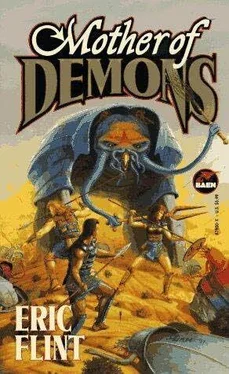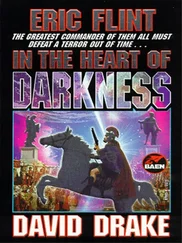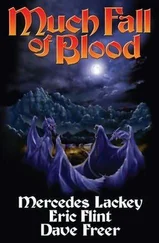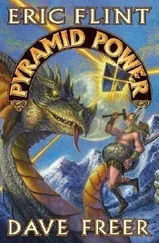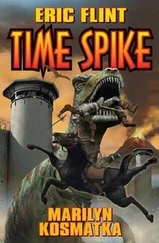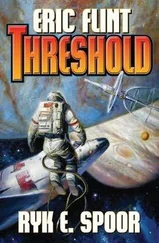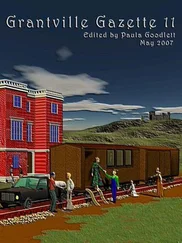Eric Flint - Mother of Demons
Здесь есть возможность читать онлайн «Eric Flint - Mother of Demons» весь текст электронной книги совершенно бесплатно (целиком полную версию без сокращений). В некоторых случаях можно слушать аудио, скачать через торрент в формате fb2 и присутствует краткое содержание. Жанр: Фантастика и фэнтези, на английском языке. Описание произведения, (предисловие) а так же отзывы посетителей доступны на портале библиотеки ЛибКат.
- Название:Mother of Demons
- Автор:
- Жанр:
- Год:неизвестен
- ISBN:нет данных
- Рейтинг книги:3 / 5. Голосов: 1
-
Избранное:Добавить в избранное
- Отзывы:
-
Ваша оценка:
- 60
- 1
- 2
- 3
- 4
- 5
Mother of Demons: краткое содержание, описание и аннотация
Предлагаем к чтению аннотацию, описание, краткое содержание или предисловие (зависит от того, что написал сам автор книги «Mother of Demons»). Если вы не нашли необходимую информацию о книге — напишите в комментариях, мы постараемся отыскать её.
Mother of Demons — читать онлайн бесплатно полную книгу (весь текст) целиком
Ниже представлен текст книги, разбитый по страницам. Система сохранения места последней прочитанной страницы, позволяет с удобством читать онлайн бесплатно книгу «Mother of Demons», без необходимости каждый раз заново искать на чём Вы остановились. Поставьте закладку, и сможете в любой момент перейти на страницу, на которой закончили чтение.
Интервал:
Закладка:
Her brows were knitted. "I don't un-"
"Just do it!"
Uncertainty vanished. As she raced back to the camp, Indira felt like she was floating on air. She had only a vague understanding of what Julius was trying to do, but she was suddenly filled with total confidence in her lover.
And hope. And hope. And hope.
Back at the camp, she ignored all the questions hurled at her. She just cried, over and again- "Manuel's okay, he's okay, he's okay!"-while she rummaged furiously in the broken shell of the lifeboat. Within a minute (which seemed like a hour), she found the khaki canvas she was looking for.
Like an antelope, back to the clearing. Then, at the last curtain of ferns, she screeched to a halt. Knelt, the canvas over her shoulder, and slowly crawled into the clearing.
Julius was still there, now holding Manuel. The boy was asleep. And, to her vast relief, the creature had not moved. It was no longer alone, however. Another had joined it. The two animals were standing side by side, staring. Their hides, she noticed, were still mottled with ochre. But the pinkish-reds had faded considerably.
She hoped she knew what that meant.
A look of relief washed over Julius' face when he saw her enter the clearing. He extended his hand.
"Toss it to me."
She shook her head, and kept crawling toward him. Once at his side, she unfolded the canvas and draped it over both of them.
They knelt there, clasping each other, facing the monsters, their mouths open.
After a time, they saw the pinkish-red fade from the hides, replaced by thin wavering stripes of green. After a time, they saw the green grow into solid bands-still against ochre-and the creatures approach. And the beaks slowly open.
Khaki life washed over them.
Remembering that day, Indira flipped back through the pages of the notebook, looking for the entry.
I should had gotten it immediately. I knew the creatures were chromatophoric. It must be the principal method by which they communicate (outside of the hoots), although I suspect that there's a lot expressed in the way they curl their tentacles. (No-the proper word is "arm." "Tentacles" are those specialized arms that squids develop, the long ones that end in palps. Tentacles are arms specialized for mobile hunters, and these critters ain't hunters of any kind.)
Nice, shy, friendly, giant octopi.
Octopus-heads, I should say.
Okay. Just in case this notebook should someday fall into the hands of an expedition come to our rescue-about a thousand years from now, I estimate-let's try to describe these beautiful nightmares. I don't want to draw down the curses of the historian, like those dopes in Roanoke who didn't keep any diaries. No, sirree. Worst cussers in the universe, historians. I know. I'm in love with one.
Here goes:
Imagine a body shaped like the thorax of a lobster. About the size of a buffalo. Except that a lobster's thorax is the carapace of an arthropod-hard and rigid. The carapace of these creatures is more like the mantle of a squid, without the flukes. That's it. Mantles. They must have evolved from something like squids.
But a squid's mantle is too soft to serve for a land creature. These mantles are much tougher. Cartilaginous inside, I suspect. Squids on earth still have a vestige of a shell inside their mantles. I suspect that on this planet the "molluscs" evolved something that serves the same purpose as a skeleton. Any large terrestrial animal has to have some kind of hard structure to support its weight. Probably pieces of shell-like material, linked together by a network of cartilage and muscle. Terrestrial analogies can be thought of. Some of the dinosaurs maintained rigid tails in a similar way. (Okay. Loosely similar. Give me a break.)
I can't be sure, of course, without dissecting one of them. (Oh boy. I mutter that in my sleep, Indira might cut my throat.)
(Come to think of it, I might cut my own throat.)
The body of the creature is enclosed by the mantle. A hard, but not totally inflexible, carapace. A thick integument covers the mantle. The integument becomes especially thick and hard (almost like soft horn), at the front of the mantle. What I've decided to call the "cowl."
I call it that because the front edge of the mantle looms over and protects the head below. Necessary, I suspect, because the head of this critter has no skull. But we'll get to the head later.
How does this thing get around? Well, here's where the molluscan Bauplan shows its possibilities. I'd love to know what the ancestor looked like. Just when you think it must have been a pseudo-cephalopod, you look at this thing's feet.
A two-legged gastropod. I kid you not. They're not "legs," of course. Not the slightest resemblance. Instead, the creature's peds are like fleshy-what can I call them? The closest analogy I can think of is pontoons. Except pontoons are rigid, and these peds are semi-segmented, like lumpy treads. Again, without cutting them open (down, boy, down) there's no way to be sure-but I'd bet that there's a complicated structure in there. Something like what must exist inside the mantle: a network of "shell"-slivers, cartilage, and muscle.
Lots of muscle. These beasties are strong. The entire body is held up, about fifty centimeters off the ground, by the two rail-feet. (Yeck. Let's stick with "peds.") It's a clumsy-looking method of locomotion, but But nothing. It is clumsy. And slow. It's a marvel that a "molluscan" Bauplan could provide enough flexibility for these things to evolve into land animals. Let's not ask for miracles on top of that. The simple fact is that the vertebrate structure is vastly superior to that of the-what do I call this phylum? Panzerpoda? God, no; ain't the slightest resemblance between these sweet creatures and the Wehrmacht!
I'll figure out what to call them later. To get back to the subject, measured by any standard of speed and mobility, vertebrates have it all over these creatures. That's not chauvinism, it's just a fact. From everything I can see-not just these creatures, but all the life-forms I've seen-humans are at least twice as fast as anything that moves on Ishtar. And we're slow, compared to most big warm-blooded vertebrates.
(Oh, yeah, before I forget. The critters are warm-blooded. The genuine article, too-homeothermic, endothermic, and tachymetabolic. I admit I can't prove the last, because I don't have the equipment to precisely analyze their metabolism. But I'm positive about the homeothermy and the endothermy.)
Back to the point. Compared to the dominant large-bodied terrestrial phylum on this planet (whatever we wind up calling it), vertebrates are: a) Much faster. b) More mobile, by a large margin.
Score one for the home team. (Visiting team, I should say.)
BUT-any football team that had one of these guys for a fullback would be invincible. Here's how the game goes:
Kickoff. Ball goes into the end zone. Start on the twenty. Hand off to Slow-But-Sure. Three minutes later-one play, mind you-Slow-But-Sure racks up six points. Guaran-teed. And introduces the world to a new culinary delight: linebacker pancake.
I kid you not. I can't imagine being able to knock one of these things down. I'm not sure a rhinoceros could do it.
And they're quicker than you might think. Their reflexes don't seem to be any slower than ours. It's just that their basic structure is so much more limiting than that of vertebrates.
Okay. Let's get to the best part. The head.
The head itself looks Oh God, Thy Name is Convergence.
– like an octopus. Almost to a T. Bulging "brow" (only here that's for real-more on that later), two gorgeous eyes (almost human looking, except they're the size of saucer-plates, and the iris takes up more of the eyeball), and a beak for a mouth surrounded by eight tentacles (OK-arms).
Читать дальшеИнтервал:
Закладка:
Похожие книги на «Mother of Demons»
Представляем Вашему вниманию похожие книги на «Mother of Demons» списком для выбора. Мы отобрали схожую по названию и смыслу литературу в надежде предоставить читателям больше вариантов отыскать новые, интересные, ещё непрочитанные произведения.
Обсуждение, отзывы о книге «Mother of Demons» и просто собственные мнения читателей. Оставьте ваши комментарии, напишите, что Вы думаете о произведении, его смысле или главных героях. Укажите что конкретно понравилось, а что нет, и почему Вы так считаете.
